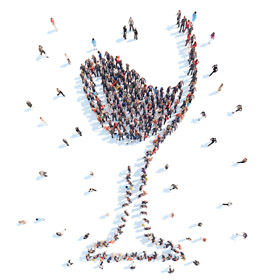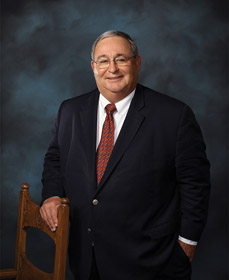Wineries, wake up! Do you know what’s on your use permits?

A warning for Napa Valley wineries: If you haven’t looked at your use permits lately, you probably should. In response to citizen pressure, the county of Napa is stepping up enforcement and aims to achieve universal compliance with winery permits and regulations.
In March 2015, responding to a growing concern from citizens that the quality of life in the valley was threatened as result of intensified industrial use within the Agriculture Preserve (AP), the Napa County Board of Supervisors created an Agricultural Protection Advisory Committee (APAC) to make recommendations on how to ensure the AP and the 1990 Wine Definition Ordinance (WDO) continue to be maintained. (For more information on the Ag Preserve and WDO, see corresponding sidebars below.)
In May, the Napa County Grand Jury issued a report, “Are Napa County Wineries Following the Rules?” which examined whether the Napa County Planning Department was issuing winery use permits that conformed to WDO requirements and if it was adequately monitoring compliance to those permits. In their recommendations, the grand jury called on the board of supervisors to take steps to increase wineries’ compliance with county rules and their own use permits.
According to Napa County code enforcement officer Linda St. Claire, the Wine Audit began in 2006 as a simple review of production—a sort of “snapshot” of winery production trends. “First, the county started reviewing wineries, and now it’s ramped up to include site visitation, confirmation of grape sourcing and sale of wines in the tasting room,” she says.
 “Napa Valley Vintners [NVV] has been banging the drum of compliance for quite some time,” says Rex Stults, government relations director for the wine industry advocacy group. “All businesses have use permits and should follow them. It’s an agreement between the county and the business owner. When you don’t comply, bad things happen.” Regulations then get established to govern the lowest common denominator.
“Napa Valley Vintners [NVV] has been banging the drum of compliance for quite some time,” says Rex Stults, government relations director for the wine industry advocacy group. “All businesses have use permits and should follow them. It’s an agreement between the county and the business owner. When you don’t comply, bad things happen.” Regulations then get established to govern the lowest common denominator.When eight wineries failed the county planning department’s random 20-winery audit in 2013, “people were shocked,” says St. Claire. “Napa Valley Vintners was concerned, the public was concerned, the industry was concerned—and we were as well.” The county suddenly got serious.
What’s the problem?
“We have people coming to the board of supervisors and complaining about some of our wineries,” says First District Board Member Brad Wagenknecht. “They say, ‘You give them an inch and they take a mile.’ Some residents believe there are wineries that have taken ‘the mile,’ and they need to be stopped.”
“The problem is one of overgrowth,” says Daniel Mufson, president of the Napa Vision 2050 coalition and former member of APAC representing the environment. “When will we have enough wineries to satisfy everybody? When will we have enough event centers?” Everyone talks about “protecting agriculture,” he says. “But what do we mean when we say, ‘agriculture’?”
This question is basic to understanding the evolving conflicts that underlie the complexities of growth, permits and the way of life made possible by the Ag Preserve. In 2008, the words “related marketing, sales and other accessory uses” were inferred in the definition of agriculture in the Napa County General Plan. Since then, citizens groups have expressed concerns about the effect of high-intensity marketing activities on the Ag Preserve and quality of life in the valley. Some call for restriction. Some call for balance. All say we must protect the Ag Preserve.
“Marketing does have to be part of agriculture,” says Wagenknecht, “but it shouldn’t be the tail wagging the dog. We want good marketing of our agricultural products, but sometimes it’s getting overdone.” Visitors, events and food pairings are examples that come up frequently when people complain about the number and activities of wineries.
“We’re wrestling with our success,” says Stults. “We might be the most famous [wine region] in the United States and on par with the best in the world, but despite our reputation, we’re still a small, unique treasure. We don’t have infinite resources. We don’t have room to grow. Our boundaries are our boundaries. We need to be thoughtful on how we go forward.”
The launch of APAC
 The Agriculture Protection Advisory Committee (APAC), a group consisting of 17 members representing business, industry, environment, community and municipality, plus five direct appointees to represent the county’s supervisorial districts, was created to prepare a set of recommendations for the board of supervisors. The group elected Ted Hall, CEO/president of Long Meadow Ranch and Affiliates and a member of the Napa Valley Grapegrowers, as chair.
The Agriculture Protection Advisory Committee (APAC), a group consisting of 17 members representing business, industry, environment, community and municipality, plus five direct appointees to represent the county’s supervisorial districts, was created to prepare a set of recommendations for the board of supervisors. The group elected Ted Hall, CEO/president of Long Meadow Ranch and Affiliates and a member of the Napa Valley Grapegrowers, as chair.“If you listen carefully,” says Hall, “what people are complaining about has to do with the traffic, water, jobs and housing imbalance—it’s not directly to issues related to farming and winemaking, except when the assumption is they contribute to traffic.” While it wasn’t the job of APAC to discuss those issues per se, the intensification of use in the Ag Preserve (which was the focus of APAC’s assignment) is driving concern about those basic environmental and quality of life issues.
Addressing the slippery question “What is agriculture?,” APAC members agreed (by supermajority) to recommend the county use the current working definition of agriculture. Setting aside the controversy of whether retail sales and marketing should be part of the definition, they agreed on what activities are not permissible within the definition as it is, including: corporate retreat meetings, weddings, food services that substitute for a meal, movie nights and yoga classes. Hall says the public comments made by all the participating interest groups was helpful. “It really brought clarity and renewed understanding about what are, in fact, permissible activities within the Ag Preserve,” he says.
Hall points out that, while there’s been a long history of agriculture in the valley—and a long history of use permits—there’s never been a working process for asking holders of those permits to declare their compliance status. “So the net result,” he says, “especially since the industry has grown and we’ve had more marketing activity, is that we have many people proposing and actually executing activities in the Ag Preserve who have no idea what’s compliant and what’s not.”
By the time a winery realizes it’s crossed the line on one of its permits (or completely lacks one), the infraction may result in fines, require the winery to restore its activities to the approved allowance to reach compliance and/or require an application to modify the existing permit. This means time and expense.
That’s when St. Claire steps in. Twenty wineries are chosen randomly, and she’ll review all those wineries’ histories. She looks at all their use permits, modifications, building permits and environmental permits to see what is and isn’t allowed. She compares the approved use permit(s) and modifications to actual production, visitation, grape sourcing and the like, then lets those that fail know the results.
Some key APAC recommendations
The first recommendation on the APAC final report, to “avoid the use of variances as a principal tool for achieving compliance with land use regulations,” recognizes the frustration with wineries that too easily get variances. It also indicates a grim reality facing wineries that have knowingly (or unknowingly) been out of compliance.
To achieve the county’s requirement for universal compliance, APAC recommended a self-reporting process to be carried out by all wineries. On this point, Hall notes an important vocabulary distinction. “Compliance and enforcement are different ideas,” he says. “Enforcement is one of many mechanisms to achieve compliance. Enforcement, generally, in the absence of things like common understanding and voluntary willingness to comply, isn’t going to get you very far.” The ideal is a climate where everyone takes permits seriously and stays within them—as most wineries do now, stress Hall, Stultz and St. Claire.
Self-reporting in the spirit of cooperation isn’t meant to be any more onerous than an annual tax return, says Hall. “We’re not asking [winery owners] to provide enumerated proof of compliance, but simply to sign a statement saying that they are.” The statement would be accompanied by two pieces of data: the level of production in gallons, which is the production limit imposed in each use permit, and the percentage of grapes used that were grown in Napa Valley. “Those are both verifiable pieces of information,” he says.
“This universal declaration of compliance will bring behavior into a more consistent pattern across the valley,” says Hall, “and will make every principal officer aware that they’re going to have to take some time to think about those conditions. Maybe we’ll have to do some training. These questions have never been asked before.”
St. Claire says she tells clients who fail their audit, “Congratulations on your business success! You’re making more wine or having more visitors than your permit allows, so your business is booming. Now you have to dust off your permits and get into compliance!”
Take two aspirin and call your lawyer
 Attorney Katherine Philippakis, chair of Farella Braun + Martel’s wine industry practice in St. Helena and former planning commissioner for the city of St. Helena, advises winery owners (if they haven’t already) to take compliance issues seriously and act early.
Attorney Katherine Philippakis, chair of Farella Braun + Martel’s wine industry practice in St. Helena and former planning commissioner for the city of St. Helena, advises winery owners (if they haven’t already) to take compliance issues seriously and act early.“Generally, I’ve found that people want to do the right thing, but they’re bewildered and overwhelmed by the current regulatory climate.”
Philippakis advises clients to err on the side of caution. “For a long time, the attitude among many was, supposedly, that it’s easier to seek forgiveness than permission. That’s no longer the case—if it ever was. Wineries are the focus of intense public scrutiny, so I advise clients not to do anything that would draw negative attention to themselves in the current climate.”
If you sense you may need help, she advises you to call your attorney before the problem gets too entangled. “So often, I’m asked to help once a problem has become a crisis. In that situation, any resolution is invariably more lengthy, frustrating and expensive than it would have been with an early intervention. When I’m asked to consult on a project in its initial stages, I can often help guide the landowner to avoid potential problems altogether.”
Don’t delude yourself that a permit issue will go away by itself or is likely to be simply resolved. “Often, wineries have use permits that have been modified multiple times over the years, and it can be very complicated to determine which conditions remain in effect and which have fallen into desuetude,” she says. “In addition, permit conditions are often vague, ambiguous or no longer clearly applicable. I’ve found there’s rarely a simple case.”
Whatever the scenario, applicants should prepare for increased costs, says Phillipakis. “As the county permit application process becomes more complicated and more fraught with risk, applicants will increasingly need legal help—as well as myriad environmental and operational consultants—to get any project through the system safely and effectively.”
Last word
“The preservation of agriculture—which, to be clear, means more than just winegrapes—is of foundational importance to our way of life,” says Hall, “and there will always be incentives for people to engage in activities outside the boundaries of agriculture. We have to be forever vigilant to protect our heritage and the Ag Preserve.”
“Bottom line,” adds Wagenknecht, “is that we still have agriculture as our highest and best use of land in Napa County. That’s not going to change.”
“This is a small, special place,” says Stults, “and we all have to work hard to take care of it.”
The Agricultural Preserve
In 1968, the Napa County Board of Supervisors and the Napa County Planning Commission joined to pass a landmark zoning ordinance that created the first Agricultural Preserve in the United States. This ordinance reflected a commitment to agriculture as the “highest and best use” of most of the land outside the local towns and the city of Napa.
The ordinance dictated that the only commercial activity allowed in these areas was agriculture and set minimum lot sizes that prevented further subdivision of parcels, limiting the potential for development. The 20-acre minimum in the Agricultural Preserve and 40-acre minimum in the Agricultural Watershed were later increased to 40 acres and 160 acres, respectively.
Winery Definition Ordinance
By the late 1980s, the strength of the local industry led to the establishment of many new wineries across Napa County. Wineries were allowed in the Ag Preserve because of their connection to local agriculture—processing the grape crop. Around this time, it became clear that ensuring winery development was consistent with the protection of agricultural land required creating specific definitions for what sorts of activities were allowed.
The issues were discussed among members of the industry and the community at large and, although it took years to work through, the county put the Winery Definition Ordinance (WDO) in place in 1989, going into effect in early 1990.
With some important qualifications, the WDO defines a winery as a business that makes wine. Specifically, it says a winery is an “agricultural processing facility” for “the fermenting and processing of grape juice into wine.” The WDO lets wineries sell and market wine, not just produce it, but such marketing activity must be an “accessory” and subordinate to production. To this end, all accessory uses must be contained in fewer than 40 percent of the winery’s footprint.
The WDO also includes restrictions on grape sourcing. With the goal of preserving Napa County’s agricultural lands, it occurred to some local growers that ensuring a winery was a place that made wine didn’t go far enough. They believed the only way a winery could be consistent with supporting local agriculture was if it was processing local grapes. It was this thinking that led the Napa Valley Grapegrowers to propose the “75 percent rule,” which dictates that wineries must use at least 75 percent grapes from Napa County to use the name “Napa” on their label.
Sonoma County Forms Winery Working Group
Sonoma County, with its large, open expanses and varied landscapes—only 6 percent developed as vineyards—is experiencing tensions similar to those in Napa surrounding the questions of how much growth is detrimental to the quality of life and agricultural nature of the place, and how that growth should be managed.
Because the nature of wine marketing has changed to include events and food, the Sonoma County General Plan now calls for the development of regulations to more specifically define compatible agricultural promotional activities, including permissible sizes and intensities. The plan also states that visitor-serving uses, even if related to surrounding agricultural activities, can be detrimental to the primary use of land for the production of food, fiber and plant materials. The goal of the general plan policies is to preserve agricultural lands and maintain the rural character of the area while enhancing the economic viability of farms.
To address the growing volume of complaints from the community, including some winery owners, about increased noise and traffic stemming from winery events and the growing concentration of wineries (in the Kenwood area, in particular), the Sonoma County Permit and Resource Management Department convened what it calls the Winery Working Group, where stakeholders can discuss the pressures affecting both sides and seek amicable resolution. The group meets on the second Wednesday of every month and is open to the public—but not to public comment.
For more information on the Winery Working Group public workshop go to www.sonoma-county.org/prmd/docs/wineryevents.



